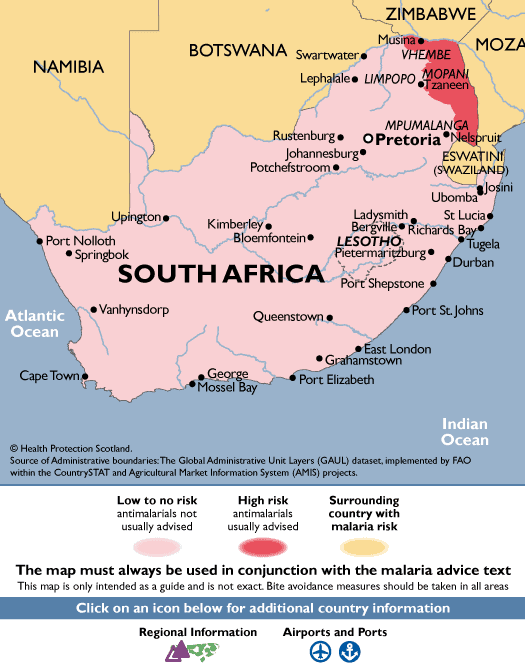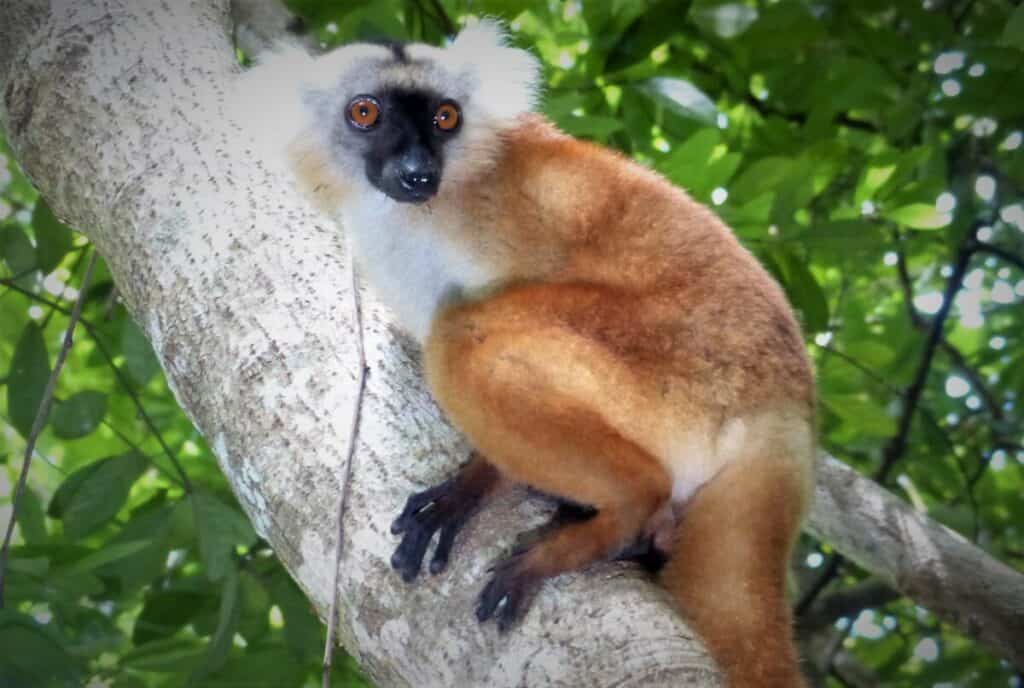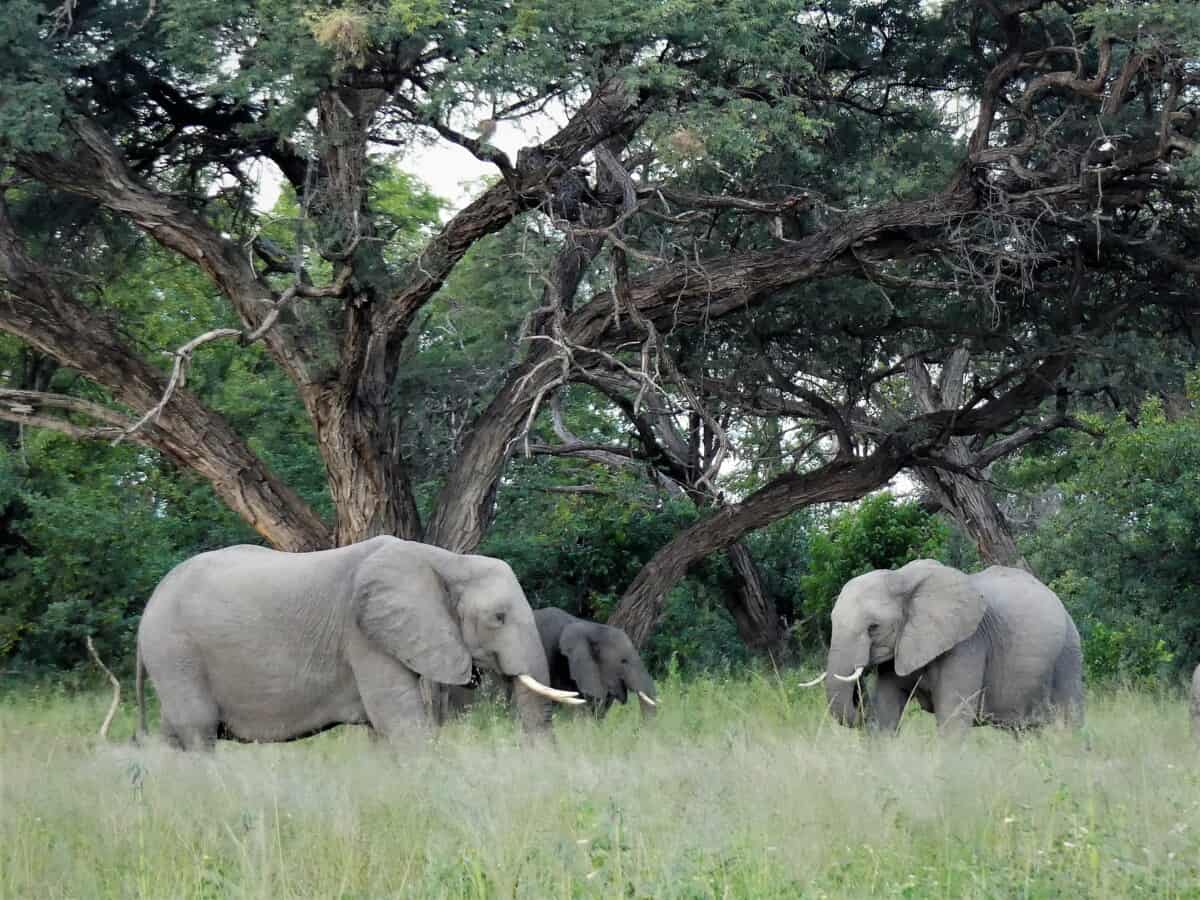Best Cruise Ports in Africa for Nature Lovers, Birders & Wildlife Watchers
We have given nature presentations on cruise ships for over a dozen years and have had the opportunity to visit over 90 countries and at least 200 cruise ports throughout the world.
In this article we’ve highlighted our top picks for the best cruise ports in Africa and Madagascar for nature lovers and wildlife enthusiasts. We find it exciting that you can go on an authentic one-day African safari from a cruise ship. Let us show you where!
We’ve used four criteria in selecting our top picks:
- We’ve visited each of these ports and have given our top picks based on personal experience.
- We’ve highlighted ports that are accessible via mainstream cruise lines, rather than specialty expedition cruise ships.
- We’ve chosen ports with nature and wildlife opportunities that are close enough to easily visit in a day, since port visits are usually about 5 to 10 hours. This means that the return access times by car, bus, or taxi must allow time for a meaningful experience. Personally, we are more interested in seeing wildlife and exploring nature than we are in eating lunch for two hours. Although it is nice if lunch is included.
- The nature and wildlife opportunities and the scenery at these ports are all outstanding and worthy of providing lifelong memories. We’ve chosen ports that we would enjoy going back to at any time because of the great memories and photos we’ve acquired during past visits.
Africa / Madagascar
![]() Richard’s Bay, South Africa
Richard’s Bay, South Africa
Richard’s Bay provides an excellent opportunity to go on an exciting one-day safari where you are almost guaranteed to see iconic African species such as elephants, giraffe, zebra, and rhino.
If you have never taken an African Safari you may not appreciate the wonderful wildlife viewing opportunities that you are missing.
We’ve enjoyed visiting both Thula Thula private game reserve and the government run Hluhluwe & Imfolozi Game Reserve. It always feels like magic when we step off a ship and find ourselves in a port where we can take a genuine African safari on a one-day shore excursion!!
Thula Thula Game Reserve
This is our favorite day trip in South Africa, and it is just an hour outside of Richard’s Bay. We were inspired to visit after reading Lawrence Anthony’s highly recommended book, The Elephant Whisperer.
As soon as we heard our ship was docking at Richard’s Bay, within an hour of Thula Thula, we started to plan our adventure. Four new friends from the ship joined us and the owner, Francoise, had arranged for Stuart of Fever Tree Tours to pick us up. We arrived at noon to a warm welcome, delicious French food, and drinks — followed by a wildlife safari.
We saw baby rhinos on the front lawn with armed bodyguards protecting them from poachers. There were giraffes, zebras, birds galore and of course our elephant adventure!
The oldest bull, Gobesa, was in musth and we knew bulls could easily flip a car in this excited state. We were told he had been given estrogen therapy to calm him down and we were the first visitors to check on him. Our driver parked in some bushes about 50 meters away, but as the elephant browsed, he moved closer and closer. Then our land rover became stuck on some roots as the driver tried to back out. Tense moments followed as we wondered how Gobesa would react to all the commotion and engine noise. The old bull didn’t bat an eyelid as our driver managed to coax the vehicle back onto the roadway. Hormone therapy successful!
After Lawrence’s premature death at 61 years old, Françoise took full responsibility for running Thula Thula as a successful conservation enterprise happily funded by visitors like us. She has done an amazing job of managing and nurturing this wildlife sanctuary despite the never-ending threat of poachers. We love receiving her email newsletters filled with news of what’s happening in this wildlife gem. My favorite Thula Thula hat has been happily worn out, so we’re due for another visit.
Here’s an excellent short video interview with Lawrence Anthony before his untimely death at age 61.
Hluhluwe / Imfolozi Game Reserve
You can take an excellent one-day safari to Hluhluwe / Imfolozi, the oldest game reserve in South Africa (Hluhluwe is pronounced Shushlooway) as a shore excursion from Richard’s Bay. This reserve is home to the world’s largest population of white rhino and other endangered species such as the African Painted Wild Dog.
Another option is to rent or hire a car in Richard’s Bay if you feel confident about the time allotment and your African driving abilities. A self-drive safari in this reserve gives you the chance to see the “Big 5” – lion, leopard, elephant, buffalo, and rhino – as well as many other exciting wildlife species. Please keep in mind that it may not be easy to hire a car in Richard’s Bay. There is no cruise terminal and cruise ships dock at the industrial port a long way from town.
We’ve experienced some of our most amazing wildlife moments while sitting quietly in bird blinds or hides. One such experience in Hluhluwe included listening to the roar of lions close by. This is one sound that elicits an innate response that we humans have embedded in our DNA! Humans have evolved to pay close attention when we hear the roar of lions! Makes sense when you consider that every human being on the planet is descended from ancestors who lived in Africa less than 200,000 years ago.
Saint Lucia Estuary, Saint Lucia, South Africa
St Lucia estuary is about an hour and a half drive north of Richard’s Bay and offers some excellent wildlife viewing opportunities. The estuary is home to more than 800 hippo’s and roughly 1200 Nile crocodiles. These outstanding wetlands were designated as a UNESCO world heritage site in 1999, the first in South Africa.
This is one of the best places to get a good look at hippos, one of the most iconic of African wildlife species. When we see these animals, they tend to be lounging around in rivers and lakes. Why does such a docile-looking animal have a reputation as the most dangerous animal in Africa?! See my hippo article to find out why.

Even though crocodiles look like living dinosaurs with their scales, claws, and jaws they can be easily underestimated. They also appear to be dozing along the riverbanks and in the shallow water. We’re beginning to realize that these reptiles have a lot more happening between the neurons than we thought possible (check out my article on how smart crocodiles can be).
Keep in mind that Saint Lucia Estuary is on the edge of a malarial zone and November to March is the rainy season. You probably wouldn’t need to take anti-malarial drugs but check out the South Africa malaria map just to be safe.

Port Elizabeth, South Africa
This is a top-rated wildlife watching port with easy access to one of the largest and most iconic parks in South Africa, Addo Elephant National Park.
Addo is South Africa’s third largest Park and a wildlife-lovers dream; with 600 elephants, 400 Cape buffalo, endangered Black rhino, and lions – all within 70 miles drive from the dock.
Unfortunately, our ship didn’t arrive early enough to allow us to catch the Park’s morning safari, but we were very lucky to find a taxi driver who was recommended to us for his knowledge of the park and its wildlife. For less than a hundred dollars, our driver spent the day delighting us with his tales of growing up in the bush. My husband and our driver shared a biologist’s fascination with dueling Dung beetles.
Meanwhile I was excited by the open savanna allowing me clear close-up shots of elephants at the watering hole and towering over cars on the road; a gorgeous black backed jackal, and ostriches feeding close by. Photo ops are good, since the animals in Addo are accustomed to cars and are not as skittish as animals outside the park.

An early arrival would certainly justify a more expensive safari trip organized through your ship or by a highly recommended local tour company. Always consider that the earlier you arrive to the park, the better your chances of seeing more wildlife. We didn’t see lions on our trip, showing that there’s nothing choreographed about a trip to Addo.
Leave plenty of time to be back on board for sail away! The Captain only waits for people on excursions booked through the ship.
Note: Between June and January you might be able to go on a whale watching excursion searching for Southern Right whales and Humpback whales.
Cape Town, South Africa
Cape town is one of our favourite cities in the entire world, with stunning scenery and plenty of good transportation options. The port is frequently visited by several cruise lines and offers some unique opportunities for getting close to nature and spotting African creatures in their native habitat.
Kirstenbosch gardens
Kirstenbosch National Botanical Garden is easily accessible on a shore excursion or on your own via the Hop-On Hop-Off Bus or taxi. Kirstenbosch is a nature-lover’s paradise of pristine fynbos and forest, set in a stunning landscape. It is one of the great botanic gardens of the world, with the eastern slopes of Table Mountain providing a scenic backdrop.
We can highly recommend Kirstenbosch for nature lovers. We’ve enjoyed the beauty of the spectacular flowers while walking the paths, particularly the proteas, including the king protea – the national flower of South Africa. The abundant native plants attract many birds to the 528 ha Cape Floristic Region Protected Area. The protected area supports natural forest and fynbos, and attracts indigenous wildlife, including birds, mammals, reptiles, frogs, and insects.
This is a good place to learn about the unique Cape Floristic plant kingdom that contains an amazing 9,000 species –with 69% of them endemic and 1,435 of them rare or threatened. It is a recognized biodiversity hotspot and was proclaimed a UNESCO World Heritage Site in 2004.
African Penguin colony at Boulders Beach
One of our favorite areas for a nature-oriented shore excursion from Cape Town is Boulders Beach in Simons Town. The scenery is great, and you’ll find a colony of African penguins that are unusually tame and accustomed to people.
African penguins are also called jackass penguins because of the sound they make, like a donkey’s bray. These endangered birds are restricted to the waters and rocky shores of southern Africa and it is the only species of penguin that nests in Africa.
Boulders beach can get crowded with tourists, but we’ve found the opportunity to get so close to these fascinating – and often comical – birds more than compensates for the crowds. Even if you don’t consider yourself a wildlife photographer, you can get some amazing penguin shots at Boulders beach.
Table Mountain
Check out George’s informative article on 12 Reasons to Visit Table Mountain.
Table mountain is another extremely touristy place, but we’ve included it on this list for the exceptional scenery and the fact that even with the big crowds there’s room to spread out and find a quiet place to soak in the natural setting. We have very fond memories of sitting on the cliffs near sunset with astounding views of Cape Town, Lion’s Head, and Camp’s Town spread out far below.
Here’s a 360 video that I’ve prepared to give you some idea of the cable car ride to the top and some of the amazing views from the cliff-top pathways. You can spin this video to look around as it plays!
Table Mountain is part of the 528 ha Cape Floristic Region Protected Area and World Heritage Site. The Cape Floristic Region is the single richest floristic area in the world. You’ll find the iconic fynbos vegetation on the mountain, with over 1,460 species of plants, and there are plenty of lizards, insects and birds to be seen.
One animal that you are bound to see is what the locals call a dassie. As a young naturalist I was always fascinated with this creature because it looks like a giant guinea pig, but it’s closes relative is, in fact, the elephant! I’m referring to the Rock Hyrax, of course. There are lots of these interesting creatures at the top of Table mountain and they are remarkably tame – another great photo op!!
The cableway is worth the expense in our opinion, even though you do face long lineups and crowded conditions. At the top, we stay close to the upper cable station and find the short walks perfect. The ground is level and the paths are easy to navigate. There are also short guided walks departing from the Table Mountain Café on the hour from 9 am to 3 pm that are free of charge.
Of course, you can go for much longer hikes – but unfortunately, you must use caution. If you plan a longer hike do your research because there are frequent reports of incidents including muggings, robberies and even stabbings. I was surprised to read on the cableway website the following warning: Just remember that you won’t always be able to rely on the Cableway to get up or down (due to unpredictable weather conditions), so leave yourself enough time to hike to the top and back again before dark if needs be.
Nosy Be, Madagascar
Madagascar is one of the most amazing places to visit for nature lovers, but it is not an easy place to get to. One of the ports that does occasionally appear on cruise itineraries is Hell Ville on the island of Nosy Be. To put it succinctly, Madagascar is not a well-run place. In fact, it is rife with political interference, corruption, and violence. But it does have lemurs!!
Nosy Be is one of the best places to see lemurs in the wild from a cruise port. You can arrange private shore excursions to Lokabe reserve – which is a strenuous adventure that entails about an hour and half of driving, an hour canoe paddle each way, and an hour or two walking forest paths (see my article on our trip to see the Lemurs). We can recommend this tour if you are physically in good shape, but only IF you can arrange a trip before-hand with a reputable tour company. Be careful to do your research and go with a company that has bona fide reviews from satisfied customers.

It might be worth the peace of mind to go through the cruise line and take a ship’s shore excursion, even though the price will likely be higher than a local tour offering. We recommend this for your own safety and security, especially if you can find a tour to Lokabe Reserve.
If you want to see lemurs in the wild, be certain to confirm that the tour goes to the Lokabe Special Reserve near the village of Ampasipohy. If the person answering your questions does not know or cannot confirm this, you are likely going to be taken to Black Lemur Sanctuary, which is a private zoo rather than of a nature reserve.
Just so you know: Don’t confuse the Lokabe Special Reserve with the Black Lemur Sanctuary a short boat ride away from the port on the island of Nosy Komba. Lokabe reserve is administered as a national park with the aim of protecting native flora and fauna. The Black Lemur Sanctuary has mixed reviews on Tripadvisor, although you can see captive lemurs, snakes, and chameleons. One of the more critical reviewers summed it up this way: “If you are a true lover of nature and wildlife, you can skip this tour. Many boats do the same tour, so there might be a few hundred tourists around and you walk in a line. This place exists only to take your money, obviously no interest in animal welfare.”
There you have it — a difficult choice! If you want to see lemurs in the wild at Nosy Be, you should be prepared for a strenuous adventure: probably paddling a canoe, walking across mudflats, and taking slippery forest paths. Is it worth it? Absolutely! If you have even a moderate level of fitness you should be fine. On the other hand, you can take the easy trip to Nosy Komba, where you can see lemurs, but you might be disappointed in the overall experience.

